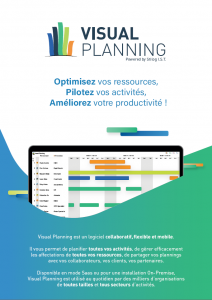Human resources software comes with various benefits. They can reduce the time and expense associated with managing your workforce, help ensure everyone is on the same page and even increase employee morale. But before you can leverage those benefits, you have to choose the right human resources software for your business. Follow the nine steps below to help pick the best HR software for your company.
1. Begin with what you need.
Start by understanding your business and HR needs. All HR software is slightly different, with solutions designed to meet different needs. If you don’t know your needs, you can’t pick the best HR software for your business.
Here are some questions to ask yourself, your HR teams, managers and other key employees to help determine what you need in an HR software solution:
- What processes are you handling manually that might be better handled with automatic or technical tools?
- What processes work well for your HR staff and employees? This helps you identify areas you want to keep relatively the same when migrating to a software solution.
- What processes don’t work well? This question helps you find challenges you might seek to solve with HR software.
- Are there things you wish you could do but you don’t have the technology, resources or bandwidth for them?
- What HR skills do you want the solution to support? A software system doesn’t replace critical professional skills like communication but it can make those skills easier to use.
2. Understand your budget.
Next, set boundaries for your budget. You could get someone to code and develop a completely custom solution that does every single thing you can imagine. But for most businesses, from-scratch custom solutions are cost prohibitive.
Going into the process of seeking an HR software solution without a budget can be an issue. It’s easy to overextend your business chasing features that sound awesome but might not provide a lot of ROI. Instead, know how much you can afford so you can choose the functions you really need and forgo others that would only be nice (and don’t fit your price point).
3. Decide on your timeline.
Next, determine how fast you want this solution. This helps you know if you’re looking for customizable out-of-the-box solutions or something from scratch. The latter will take a lot longer to implement than the former.
4. Appoint a decision committee.
One mistake some business leaders make is choosing a technology solution on their own. But the reality is that you probably don’t know all the things your employees and HR staff do everyday. Choosing a solution on your own can mean overlooking must haves and mistakenly thinking nice-to-haves are actually critical features.
Instead, appoint a committee who can help you plan for what you need and evaluate potential solutions to ensure they meet those needs. The committee might include team members such as:
- Someone from finance. Whether it’s the CFO or a designee, you need someone who can make decisions and provide information on budgets.
- Internal tech leaders or experts. One or two people from your technology department can inform the committee about whether certain solutions will work with in-house programs and what work may need to be done for implementation.
- Management or leadership. Have a few leaders from various levels on the committee who can speak to the needs of various departments and leadership levels.
- HR. Obviously, you need some HR pros in on the decision, as they’ll have the most updated information about company policies and human resource needs. Ensure all aspects of HR are represented, including:
- Payroll and compensation
- Knowledge management and training
- Recruiting and hiring
- Day-to-day HR processes
5. Create a checklist of must haves and nice-to-haves.
Once you have your decision team in order and complete all the research in steps 1 through 3 above, get everyone together to brainstorm a few lists, including what your HR software solution must have/do and features that would be nice to have.
You can accomplish this in a variety of ways, but here’s a great brainstorming process to employ:
- Give everyone a stack of sticky notes
- Spend 5-10 minutes having everyone write down each feature they feel is important for HR software. Tell them there are no bad ideas or options at this point, so just write as many things as quickly as possible.
- Place all the sticky notes on a wall or whiteboard, removing duplicates.
- As a team, consider the feature on each sticky note. Sort them into columns:
- Must haves
- Really nice to haves/high-level wants
- Okay to have/less important wants
- Least important wants — those that would be nice to have but won’t impact your decision on the software
- Consider the must-have list as a team and ensure you didn’t miss anything that needs to be added.
- Have someone turn these lists into a checklist document that can be used to evaluate software solutions.
6. Consider all options.
Begin researching to find all of your options. Start with Google searches for top HR software solutions, read online reviews and ask business partners what they might be using. Appoint a small contingent of the decision committee to review as many available options as possible, using the checklist the team created to evaluate whether software solutions might be a good fit.
This step lets you rule out software that obviously won’t meet your must-have needs so you don’t spend time reviewing demos or going through trials for options that simply aren’t a good match for you.
7. Request demos or trials for top contenders.
After narrowing down your search results with your checklist, look at demos and free trials for the top choices. This lets you get a feel for how the systems work and whether they might be a good fit for your staff and processes. During this part of the review, narrow your search further to no more than three choices you want to consider further.
8. Interview your top three vendors.
Reach out to your top choices and schedule interviews. Have a few people from your decision team on the interview to ask appropriate questions and report back to the entire committee. Some things you’ll want to find out during these calls or meetings include:
- Details about pricing structures and what the solution might end up costing your company.
- Available customizations and whether the vendor can truly meet your must-have list.
- Whether the system will integrate with your current solutions.
- How implementation might work and what support the vendor will provide.
9. Choose the human resources software that is best for your business.
Using the information you gathered throughout this process, work as a committee to choose the human resources software solution that best meets the needs of your business.
If you’re in the middle of this process or considering it, reach out to Visual Planning. Our team can provide a customized demo and answer all of your questions about our series of business software solutions.
Manale is a passionate about digital marketing. She joined STILOG I.S.T in 2018.
She brings SEO & SEA expertise, email marketing and creative content marketing to create a great brand experience for Visual Planning customers.



